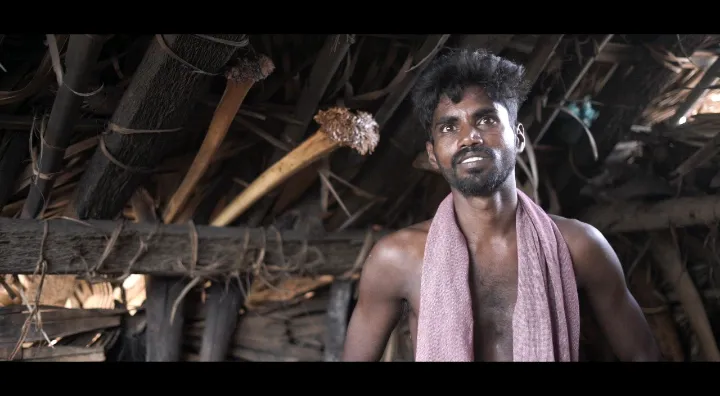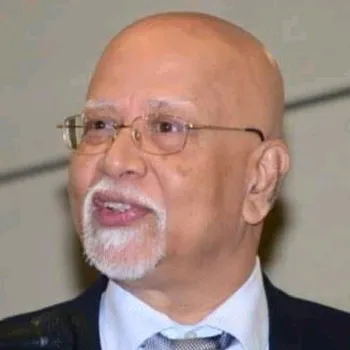Monsoon murmurs (9)
Discrimination is an act of nature to create something novel and new. Evolutionist would say reproductive isolation is the root of variation in biology. The biodiversity one sees in the world arises out of selective discrimination. It is easy to practice this in an animal world but not so in human world where the natural selection invariably fails. However, nature tries its age old trick on mankind constantly. Tamil society being one of the oldest in human evolution exhibited this natural selection in the form of caste. A caste is a variation, a tribe in making, a micro evolutionary attempt. The fascinating aspect of caste is reproductive isolation. Intercaste marriage is strongly discouraged in order to isolate a caste as unique as possible.
To find the origin of caste is very difficult as it is deep hidden in the social psychology from time immemorial. The varnasrama dharma quoted in Baghavat Gita is a flexible system of societal movement based on ones human qualities. If your interests are more in learning, then you are a priest, a brahmin. In stead, if you are brave and not worried about death, you are a warrior, a sakhtria. If you are clever with money, you are a trader, the vaisya (bania). If your interests are on earth and make it flourish, then your Sutra the life giver. People were allow to move on this fabric based on their interest. A classical example is Viswamitra a warrior turned brahmin because of interest in learning. Krishna, the supreme God chose to be in Sutra class out of his interests in animal husbandry.
The castes in India are micro social structures with unique division of labour. Each caste has its own food habits, a dialect, a social behaviour and culture. A paraiah is distinctly different from the mostly vegetarian brahmin. They differ in their profession and cult. It could be similar to tribes in Africa but could be very unique to India too. The fundamental unit of an Indian society is caste. This has been constitutionalized and institutionalized in India. The electorial victory is based on castes. Your educational opportunities are based on it. Your career choices are again rely on your caste. Yet, caste is a bad word in India. Nobody wants to talk about it as it is strongly linked with discrimination. Social upper or lower levels are decided by it. The worst form of racism is practiced on the basis of caste. The worst form of social violence occurs based on castes. So it is not spoken loudly. However, every one knows in India that it is important. A hidden secret of a hypocritical society.
Nandu's village is not any different from other villages in India. Brahmins were located in the vicinity of a temple and the outcastes are at the outer ring of the village. However, independent India under the leadership of Pandit Jaharlal Nehru discouraged this caste discrimination and a colony for the outcaste 'ottar' community was constructed not far away from Agrahara where Brahmins live. The free roaming pigs, the farm animals of Ottas walked through the streets of brahmins, a situation never imagined in ancient Tamilnadu. Sangam literature, the ancient poetry of Tamilnadu talks about caste based colonies called, "Chaery" in ancient Tamilagam. Probably, the last remnants of such a system existed when Nandu lived. It was fast disappearing even during his time as a Sutra bought a house in agraharam.
Veda padasala, a place for learning sacred texts of India existed but closed for lack of students. Everyone went to the public school run by Government. Sanskrit, the language of Gods was replaced by English the language of the lords. English was not that welcome in a remote village in Tamilnadu. Vernacular education in Tamil was still practiced there. So the school has to attract village boys by offering special sweets and snacks for English learning. Nandu picked up the English alphabets in such a special language class.
Caste customs were still followed in its rudimentary way there. For example, a Konar, a yadhava caste person taking care of their cows should enter only through back gates and never from the front entrance. Nandu's mom was very font of cows. She bought two cows. However, taking care of a cow was not practiced by brahmins but by yadavs. So Krishna Konar, a young guy from that community visited their home from the back gate every evening to milk the cow. It was a practical solution for a large family with 8 children demanding protein diet. Krishnan was telling Nandu's mom that the cows don't yield much milk as they ought to be pregnant. He suggested that a bull is brought to their house for mating. It was an act of embarrassment as most of the children in that house was girls. But there was no other choice! So a bull was brought in through the back gate and the drama started. It was so exciting for Nandu to watch this open act of sex right in his house. Some how, Nandu liked the shape of the cow's vagina. It looked beautiful to him. The bull was ready with his strong penis emerging out of his scrotal sack. Suddenly, it jumped over the cow. The cow was so scared and moved away. First attempt was a failure. Amma (mother) asked Krishnan to hold the cow strongly that it did not move away. It was not an act of cooperation, rather a rape organized by humans. The cow has to yield, no other way. Nandu watched it with at most curiosity, the preparation, ejection and the ecstasy. Girls were asked not to step out of the home as it was pornography. Nandu being a male member was allowed to watch. In spite of such a forced copulation, pregnancy is still a question of luck. Among the two cows only one got pregnant and yielded a nice cute calf. Nandu loved that little one so much that he spent most of his off-school times with it.
© nanu
To find the origin of caste is very difficult as it is deep hidden in the social psychology from time immemorial. The varnasrama dharma quoted in Baghavat Gita is a flexible system of societal movement based on ones human qualities. If your interests are more in learning, then you are a priest, a brahmin. In stead, if you are brave and not worried about death, you are a warrior, a sakhtria. If you are clever with money, you are a trader, the vaisya (bania). If your interests are on earth and make it flourish, then your Sutra the life giver. People were allow to move on this fabric based on their interest. A classical example is Viswamitra a warrior turned brahmin because of interest in learning. Krishna, the supreme God chose to be in Sutra class out of his interests in animal husbandry.
The castes in India are micro social structures with unique division of labour. Each caste has its own food habits, a dialect, a social behaviour and culture. A paraiah is distinctly different from the mostly vegetarian brahmin. They differ in their profession and cult. It could be similar to tribes in Africa but could be very unique to India too. The fundamental unit of an Indian society is caste. This has been constitutionalized and institutionalized in India. The electorial victory is based on castes. Your educational opportunities are based on it. Your career choices are again rely on your caste. Yet, caste is a bad word in India. Nobody wants to talk about it as it is strongly linked with discrimination. Social upper or lower levels are decided by it. The worst form of racism is practiced on the basis of caste. The worst form of social violence occurs based on castes. So it is not spoken loudly. However, every one knows in India that it is important. A hidden secret of a hypocritical society.
Nandu's village is not any different from other villages in India. Brahmins were located in the vicinity of a temple and the outcastes are at the outer ring of the village. However, independent India under the leadership of Pandit Jaharlal Nehru discouraged this caste discrimination and a colony for the outcaste 'ottar' community was constructed not far away from Agrahara where Brahmins live. The free roaming pigs, the farm animals of Ottas walked through the streets of brahmins, a situation never imagined in ancient Tamilnadu. Sangam literature, the ancient poetry of Tamilnadu talks about caste based colonies called, "Chaery" in ancient Tamilagam. Probably, the last remnants of such a system existed when Nandu lived. It was fast disappearing even during his time as a Sutra bought a house in agraharam.
Veda padasala, a place for learning sacred texts of India existed but closed for lack of students. Everyone went to the public school run by Government. Sanskrit, the language of Gods was replaced by English the language of the lords. English was not that welcome in a remote village in Tamilnadu. Vernacular education in Tamil was still practiced there. So the school has to attract village boys by offering special sweets and snacks for English learning. Nandu picked up the English alphabets in such a special language class.
Caste customs were still followed in its rudimentary way there. For example, a Konar, a yadhava caste person taking care of their cows should enter only through back gates and never from the front entrance. Nandu's mom was very font of cows. She bought two cows. However, taking care of a cow was not practiced by brahmins but by yadavs. So Krishna Konar, a young guy from that community visited their home from the back gate every evening to milk the cow. It was a practical solution for a large family with 8 children demanding protein diet. Krishnan was telling Nandu's mom that the cows don't yield much milk as they ought to be pregnant. He suggested that a bull is brought to their house for mating. It was an act of embarrassment as most of the children in that house was girls. But there was no other choice! So a bull was brought in through the back gate and the drama started. It was so exciting for Nandu to watch this open act of sex right in his house. Some how, Nandu liked the shape of the cow's vagina. It looked beautiful to him. The bull was ready with his strong penis emerging out of his scrotal sack. Suddenly, it jumped over the cow. The cow was so scared and moved away. First attempt was a failure. Amma (mother) asked Krishnan to hold the cow strongly that it did not move away. It was not an act of cooperation, rather a rape organized by humans. The cow has to yield, no other way. Nandu watched it with at most curiosity, the preparation, ejection and the ecstasy. Girls were asked not to step out of the home as it was pornography. Nandu being a male member was allowed to watch. In spite of such a forced copulation, pregnancy is still a question of luck. Among the two cows only one got pregnant and yielded a nice cute calf. Nandu loved that little one so much that he spent most of his off-school times with it.
© nanu




